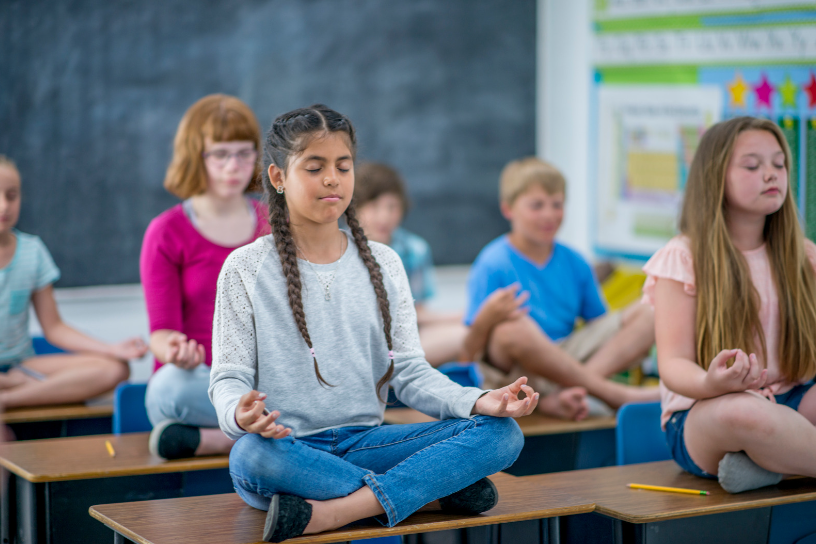Improving posture in the classroom involves addressing the unique sensory and motor needs of students.
Before beginning the exercises, therapists should always remember to provide visual support and offer frequent breaks, as these can help students build confidence. Additionally, offer positive reinforcement, such as praise and rewards for maintaining good posture and continuing practice. Below are some physical therapy activities to improve and maintain good posture in the classroom.
Warm-Up
Get kids moving and engaged with these activities.
- Animal Exercises: Use fun animal movements, such as chicken wings (flapping arms) or Flamingo pose (one leg stand and bend the other leg)
- Sensory Integration: Standing with vertical work or propping on elbows and supporting the head.
Posture Awareness Exercises
Use visual or tactile cues to remind the child to check their posture.
- Seated posture check (Sitting with legs straight together or apart)
- Shoulder blade squeeze (sit or stand up straight and comfortably squeeze your shoulder blades together)
Strengthening Exercises
Provide a fun and engaging way to make students’ exercise enjoyable and interactive.
- Seated Stretching (Have the children do one arm across the body to the opposite shoulder and hold for few seconds, repeat another arm). Stretches for the neck and shoulders to promote flexibility and reduce tension.
- Squats (lowers their hips from a standing position and then stands back up).
Balance and Coordination Exercises
Improves balance and body awareness, which supports better posture.
- Balance beam or a line on the floor: have children walk along it while maintaining good posture.
- Start with short distances and increase as they gain confidence.
Calming and Focus Techniques
Teach the children deep breathing techniques to help them stay calm and focused.
- Seated and start slow Practice, deep breaths, help them relax and maintain good posture.
- Mindfulness practice: follow the video guidance or therapist.
Cool Down
- Practice deep breathing and come back to reality.
- Play: easy nature short walk.
Author: Lixia Zhang

